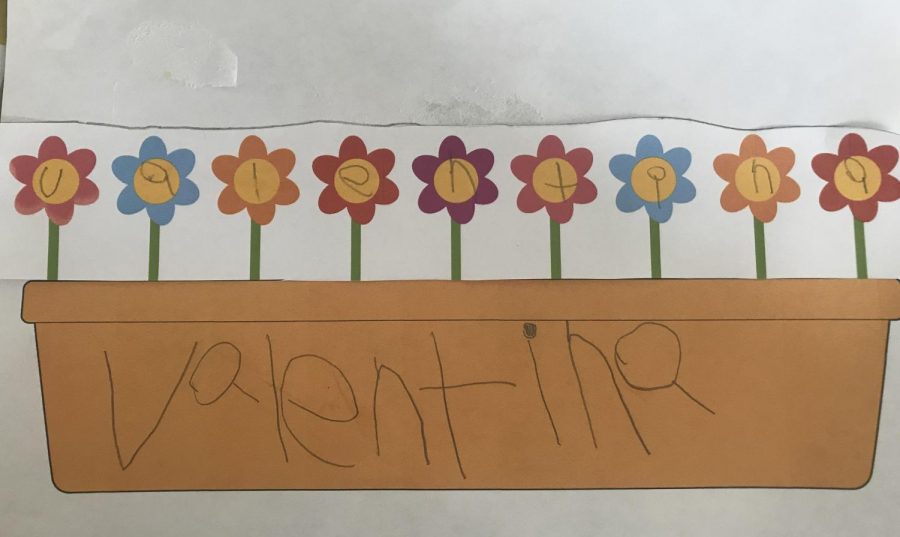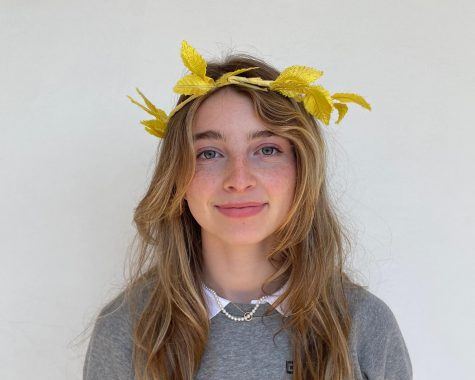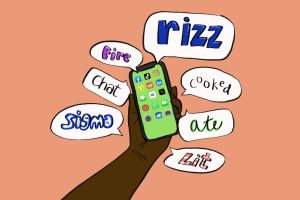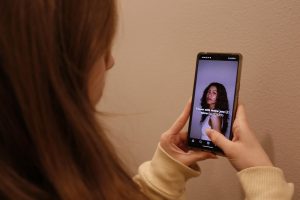Educational program aimed at children ages 3-5 emerges amid COVID-19
Photo credit: Sophie Ghiacy
Four year old Valentina Ghiacy does a cut and paste project in the “Pre-Archer” class. The class focused on colors, learning the alphabet and writing skills. Ghiacy is one of the many students in the “Pre-Archer” class, which seeks to provide a similar environment to pre-school, while the novel coronavirus remains at large.
April 25, 2021
The COVID-19 pandemic has ultimately resulted in changes to education throughout the world. According to UNESCO’s Global Monitoring of School Closures, nearly 90% of the world’s student population, over 1.5 billion learners in 170 countries, have had their education disrupted by policies and practices implemented to minimize the spread of the virus. Pre-school students have missed out on birthday parties, playdates, music classes, and sunny days in the sandbox. These precautions have caused many schools to withhold enrollment and many families to withdraw, leaving many young children isolated and emotionally detached.
While there isn’t currently enough data to calculate the effects of the quarantine on childhood and neurological development, many studies have previously highlighted the value of social interaction. Research has found that early language exposure amongst adolescents impacts later linguistic skills, cognitive abilities and academic achievement. With these educational disruptions in mind, junior Sabrina Kim founded a program called “Pre-Archer,” a weekly Zoom class held for kids, ranging from ages 3 to 5, that takes the place of what would be pre-school.
“I was talking to my Mom and she was saying that there are a lot of kids who just can’t go to school right now,” Kim said. “And it’s not just kids that are 2, 3 and 4, but also including kids that are 5 and can’t go to kindergarten because of financial issues or because they don’t have the means to have Zoom in from a computer or maybe a parent cannot stay home all day and monitor their children. I wanted to create something that was short and manageable, but also something that kids could look forward to, an opportunity to form a routine similar to school that normally stimulates mental health and social-emotional learning.”
The program is completely free and is accessible to children of all genders, socioeconomic statuses as well as locations considering it is held via Zoom. Last semester the program had two families from out of state, one located in Texas and the other in Boston.
“The program is open to anyone, not just members of the Archer community,” Kim said. “We’ve just been spreading the word about the program through word of mouth. Contacting families that people babysat for, I have a family friend that works at a school in Boston so they have brought us some new students, and then Ms. Alcala’s son and Ms. Chen’s nieces and nephews have been coming.”
While Kim is the founder of “Pre-Archer,” she does not run the weekly meetings alone. The Ambassador Leadership Team (ALT), who works closely with Admissions, holding tours and open houses, hasn’t had much of a role this year amid the pandemic. Although the program is not directly correlated to ALT, it gives many students a leadership opportunity and a role while admissions events are on pause. The five leaders alongside Kim include Chidimma Nwafor (’22), Langdon Janos (’22), Andrea Ramirez (’22) and Audrey Chang (’24).
“Every week starts with a dance, led by Langdon, and then we’ll transition into sitting downtime because we’ve found that the kids are pretty jittery when you put them into a chair so you kind of have to ease them into the concept of class,” Kim said.
The weekly curriculum begins with a song of the day, which encourages the children to stand up, dance, sing along if they know the words and get out some of that pent-up energy. The introductory song is followed by a book of the day, where students have the opportunity to develop metacognitive and verbal skills by sharing their favorite part with the rest of the class. Next is an arts and crafts activity that is followed up with a more academic worksheet that includes shapes, counting or the alphabet. The 45-minute class is rounded out with a closing song and goodbyes.
“All of our lessons are also based around themes that we introduced at the beginning of class. The theme is influenced by the holidays or sometimes the time of year like winter, which is a big one because we have kids that live in the snow or spring for Spring Break,” Janos said. “For example, around St. Patrick’s Day we did a counting exercise by seeing how many gold coins were in the pot at the end of the rainbow, so it’s a balance of instructional but also intriguing.”
Considering the class is mostly review and cementing the knowledge of prior concepts, the 5 students try to put a significant emphasis on social-emotional growth.
“Just teaching them how to make eye contact and saying hello and waving, all those things are part of the class because the etiquette is different between you and your parents and you and your teacher or your classmates when you’re a little kid and it’s important that they understand the difference,” Kim said. Then bringing that into making sure everyone’s participating, illustrating that a classroom setting is a safe space, not something to be scared of.”
Janos echoed this sentiment, saying that the class contains a lot of energy, and one needs to find the balance between controlled and chaotic energy in the classroom, especially.
“I think any kind of work with kids is always rewarding, and it’s really cool to see them come out of their shells and get excited about a topic and shout the answer,” Janos said. “It shows that we are teaching them verbal skills and the comfortability to share opinions and other thoughts around peers, but then you also want to make sure that you are balancing that with body control and learning how to raise your hand, more of that classroom atmosphere.”
Valentina Ghiacy is 4 years old, and she is participating in this semester of “Pre-Archer.” Ghiacy said that her favorite part was “all of the school,” but she also recounted a class with a red and orange color theme. Valentina’s mother, Sophia Ghiacy, stated that they did a “very fun cut and paste with colorful flowers.”
“It is a great program, especially for someone like Valentina who is not attending any other preschool at the moment, so it’s a great entry for her and opportunity,” Sophia Ghiacy said. “We are very grateful for the experience and I know my daughter is looking forward to more.”










Brian Wogensen • Apr 25, 2021 at 9:12 pm
Nicely written piece, London. I love this program!